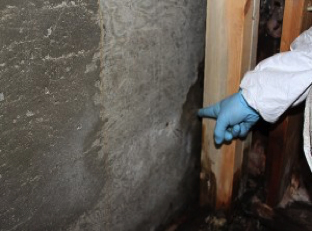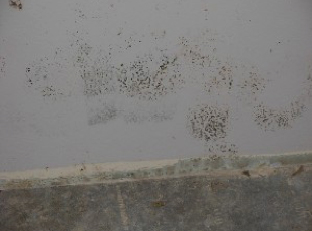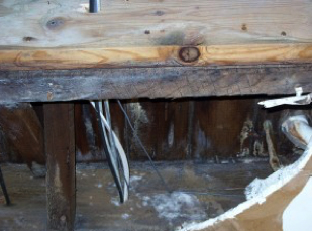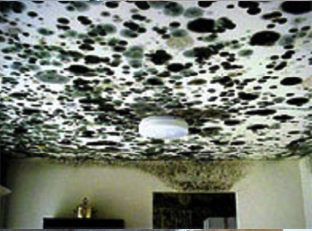



MOLD FAQ’s
What Causes Mold?
Usually, excess moisture causes mold growth. If you have mold in your home, you will need to find out how and where the moisture is getting into the house. You may have groundwater/surface leaks, moisture intrusion, a roof leak, problems with wall joists or plumbing leaks. Even stagnant water left in appliances could cause mold growth.
What Types of Mold Can Hide in My Home?
Mold samples taken by our Certified Indoor Environmental Consultant, CIEC are forwarded to a third party lab, the results of samples gathered indicates type and counts of mold spores in the area of your home or business, where sampled at the time of testing. There are thousands of mold types, including Aspergillus, Penicillium Stachybotrys and Chaetomium. Some mold types are associated with harmful toxins, some with other health problems. Once a mold professional determines what type of mold is in your home, we will determine the best course of action to eradicate the type of mold in your home or business. Fill out the contact information form for more information regarding inspection and mold testing services.
How Much Does It Cost to Have Mold Removed?
Mold removal costs are dependent upon the size of the structure, level of contamination and location in structure (basement, crawlspace, attic, bathroom, etc.), and several other factors. Choose a qualified professional Mold Remediation Contractor once the root cause of the mold in your home or building is determined, the type and elevation of the mold spores and a plan of corrective action has been implemented. Contact us today for more information.
Should I Use Bleach to Kill Mold?
While bleach may kill mold on some surfaces, it does not kill mold on porous surfaces such as wood, drywall, cloth, etc. Chlorine bleach (sodium hypochlorite 6 percent) cannot get into the porous surfaces where most mold hyphae (the root structures) grow and attach themselves. Bleach has an ion structure that prevents it from penetrating porous surfaces, thus the root structures inside the porous surfaces are not killed. While the bleach may remove the mold from the top of the surface, the roots are still inside the pores.
Furthermore, bleach could increase mold problems. The water in the bleach soaks into the porous surface and the chemical stays on top. This gives the roots more moisture to grow. Dense mold will grow onto the surface within a few days of bleach treatment and the wet surface becomes a magnet for mold spores that were not killed by surface treatment.
Typically, the proper way to remediate mold in a home or building is to hire a qualified professional mold remediation company following the IICRC-S520, Standards, under the recommendation of a Certified Indoor Environmental Consultant, CIEC. Contact Environmental Solutions Group, LLC or complete and submit the contact information form to schedule a time to inspect and/or test your home or building.
Do I Have to Remove Carpet and Sheetrock?
Sheetrock can be saved if it is structurally sound, dry, and the mold is only on the surface. In some cases, the best course of action will be to remove some or all of the impacted sheetrock. An onsite inspection will give you definitive answers on drywall. Carpet can be a bit more difficult. Often the “culprit” in mold on flooring is not the just the carpet, but the padding, tack strip, glue, and subfloor material. As such Environmental Solutions Group, LLC looks at each situation and will recommend the best course of action once all the data has been gathered through inspection and testing.
My Clothing, Furniture and Personal Items Have Been Subjected to Mold, Do I Have to Throw Them Away?
Once the mold spore type and elevation has been determined, clothes, furniture and personal items may have to be discarded. Clothes can sometimes be washed properly and/or dry-cleaned rather than discarded, however our Certified Indoor Environmental Consultant, CIEC can give you a better assessment once the inspection/testing/lab analysis process has been completed.
How Long Does It Take to Remove Mold from My Home?
The size of the impacted areas, extent of damage, corrective action, and the size of the home can vary in regard to the remediation timeline.
If I Ignore the Mold, can it affect My Health?
Possibly, however you should seek medical advice from a qualified medical professional.
Is Mold Typically Just in One Place?
Mold is a living organism which spreads by a process known as “sporulation”. Molds can disperse millions of microscopic spores which can spread throughout a structure including the central heating and air conditioning system. Thorough inspection and testing can determine if the mold is contained in a specific area or has spread into other areas of the structure.
Contact Environmental Solutions Group, LLC by completing and submitting the contact information form to schedule a time to inspect and/or test your home or business for mold.
Health Concerns:
Having mold present in your home or business is not only bad for the building itself but can adversely affect your health. Health issues related to mold have been well-documented. While healthy people can certainly suffer from mold exposure, the young, the elderly and people with respiratory conditions are even more susceptible to mold-induced health problems. You should seek medical advice from a qualified medical professional.
Contact Environmental Solutions Group, LLC by completing and submitting the contact information form to schedule a time to inspect and/or test your home or business for mold.
How Do I Know That All the Mold is Gone?
Once a mold remediation has been conducted, contact a Certified Indoor Environmental Consultant, CIEC, they can conduct Verification Testing, send the results to an independent lab for analysis, and render the proper documentation of a successful mold remediation completion.
Contact Environmental Solutions Group, LLC by completing and submitting the contact information form to schedule a time to inspect and/or test your home or business for mold.

